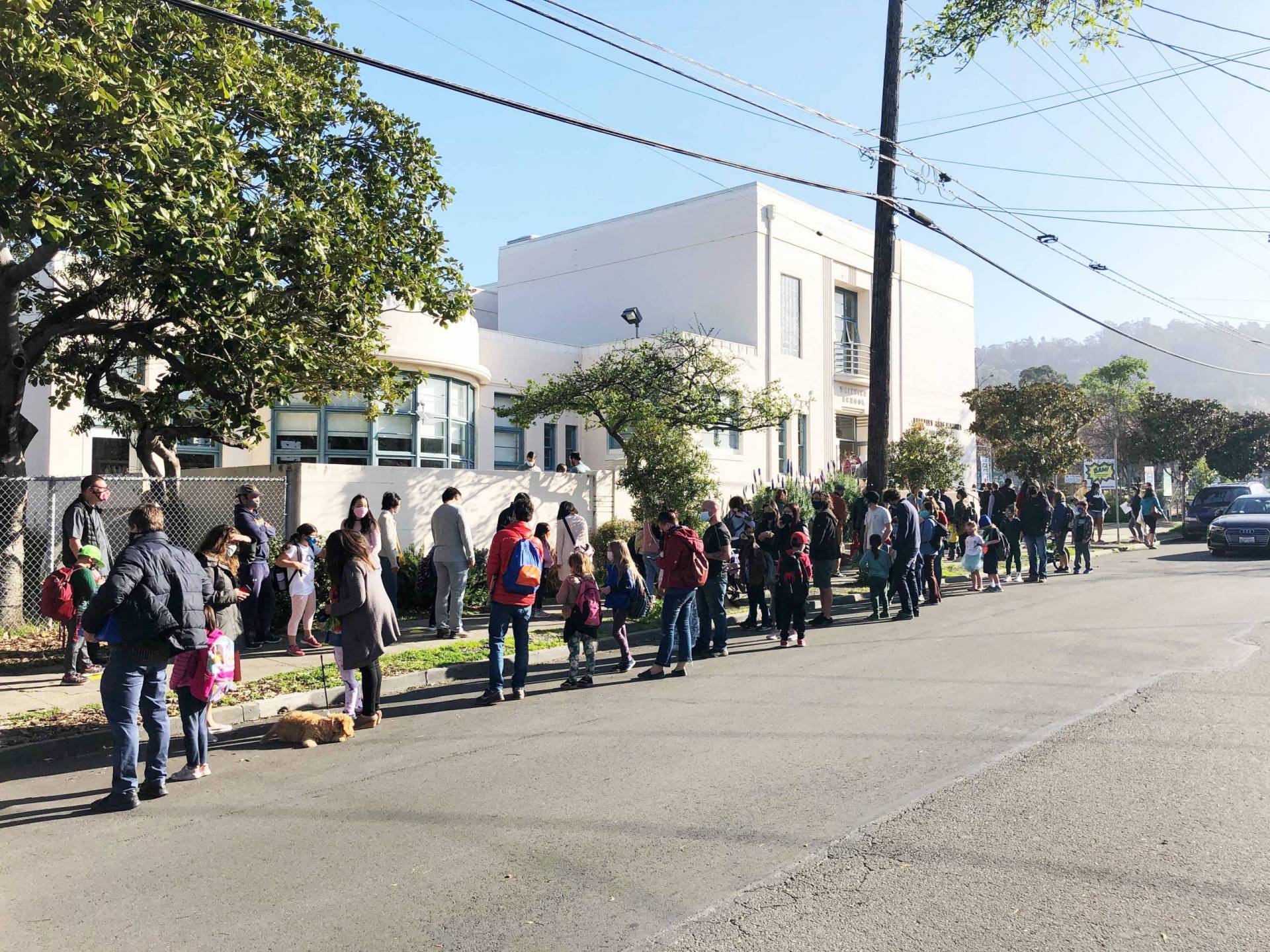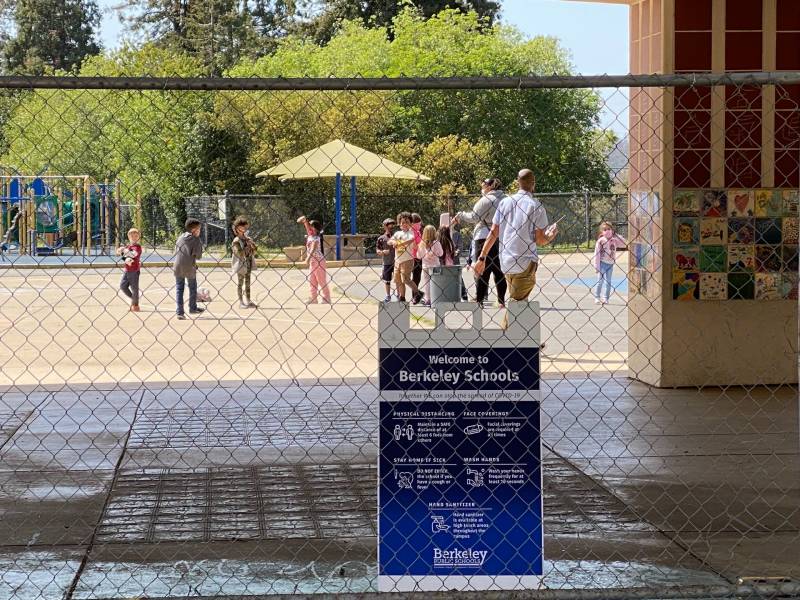It’s been a big day for some Berkeley students and parents who have endured a challenging, seemingly endless year of closed classrooms and online learning. On Monday, nearly all Berkeley public elementary schools resumed in-person classes, opening their doors to children in pre-K through second grade — one of the first districts in the region to do so.
Getting to this point has been no small feat, involving months of tense negotiations between the Berkeley Unified School District and the teachers union, as well as sometimes strained involvement from groups of passionate, increasingly frustrated parents.
The day was a moment of excitement and a huge relief, if not some trepidation, for scores of students and parents, especially those who have staunchly advocated for schools to reopen.
In all, more than 76% of Berkeley students in pre-K through second grade plan to return to in-person learning, according to district enrollment data, while more than 18% of students are expected to continue with distance learning. About 5% of students’ families didn’t respond.
Caroline Francis, who has a first grader at Berkeley’s Malcolm X Elementary School, said she trusts that the district has the process under control.
“I’ve been following the school board meetings and reading the documents that they send us, and I know that they’ve done a ton of work to prepare and that the city public health department has been really involved,” she said. “So I’m very confident that they’re ready for this.”

The safety of students and staff will be top of mind, BUSD Superintendent Brent Stephens told KQED. Everyone, he said, will be given a “health screener” each morning, and will be required to wear face coverings — except when eating and drinking — and remain socially distanced, among a bevy of other precautions.
“This particular return, for pre-K through grade two, represents a lot of collaboration, a lot of problem solving, and we’re very happy that the day has finally arrived,” Stephens said.
